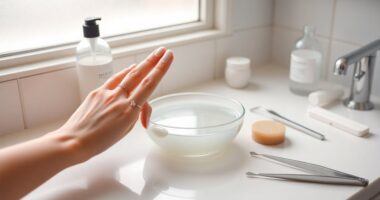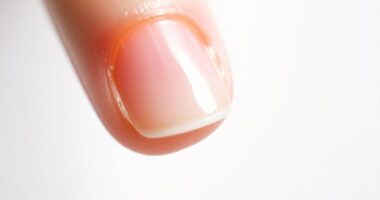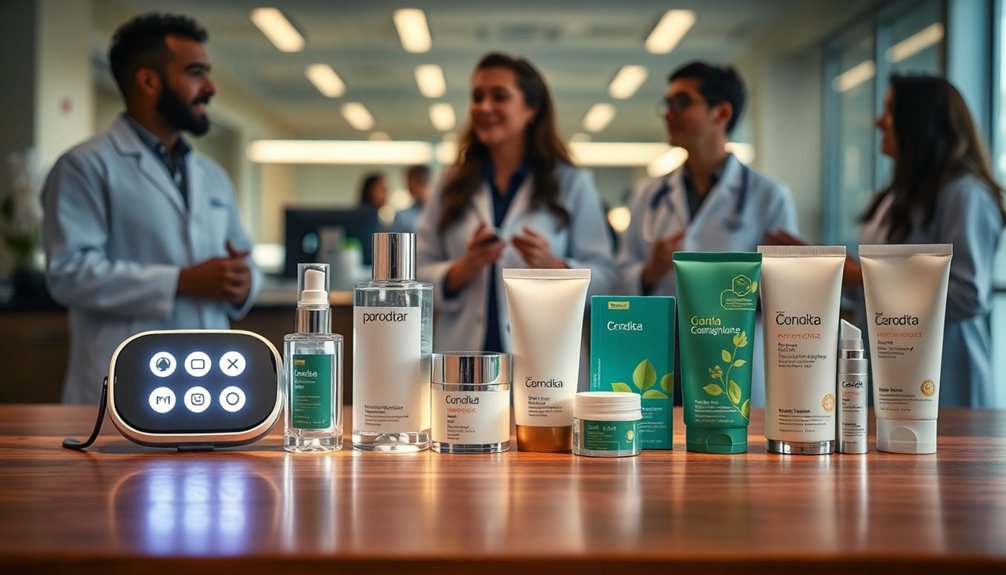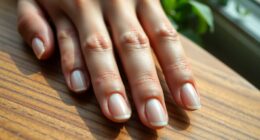Monomer for nails, primarily ethyl methacrylate (EMA), is essential for creating strong acrylic enhancements. It acts as a liquid base that initiates the chemical reaction necessary for the nails to harden. Different types of monomers vary in setting times, allowing for adjustments depending on your needs. Using monomers and polymers from the same manufacturer guarantees compatibility, which is crucial for successful application. Discover more about the various aspects of monomers and their importance in nail applications.
Key Takeaways
- Monomers for nails, primarily ethyl methacrylate (EMA), are liquid substances that initiate the polymerization process in acrylic nail systems.
- They combine with polymer powders to create a strong, durable, and sculptable material for nail enhancements.
- Different types of monomers, such as normal, slow-setting, and competition, offer varied setting times for nail applications.
- Monomers should be chosen from the same manufacturer as polymers to ensure compatibility and optimal results.
- Safety precautions are essential, including avoiding methyl methacrylate (MMA) due to health risks and working in well-ventilated areas.
Understanding Liquid Monomers
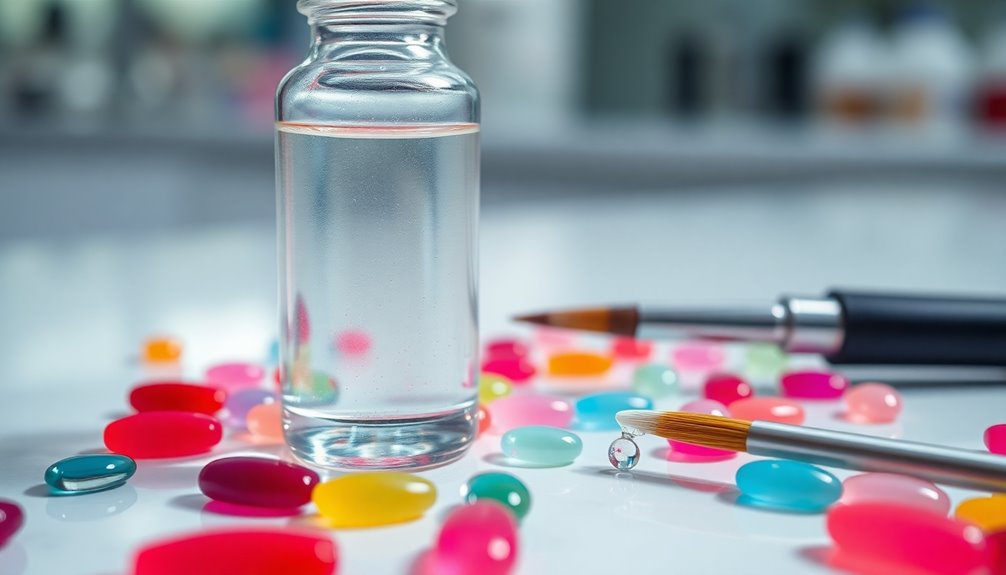
When you immerse yourself in the world of acrylic nails, understanding liquid monomers is vital.
These liquid monomers, primarily ethyl methacrylate (EMA), are the backbone of acrylic nail systems. They initiate the polymerization process, a chemical reaction that allows monomers and nail polymers to combine, creating a sculptable paste for nail enhancements.
The right mix can lead to stunning, durable nails that resist yellowing thanks to additives like UV inhibitors.
It's important to select monomers and polymers from the same manufacturer to guarantee seamless compatibility and avoid unwanted reactions.
Higher contrast ratios can enhance the visual appeal of your acrylic nail designs, making colors pop and details more pronounced.
Whether you're aiming for professional nail perfection or just experimenting at home, knowing how liquid monomers work will elevate your acrylic nail game considerably.
Types of Monomers
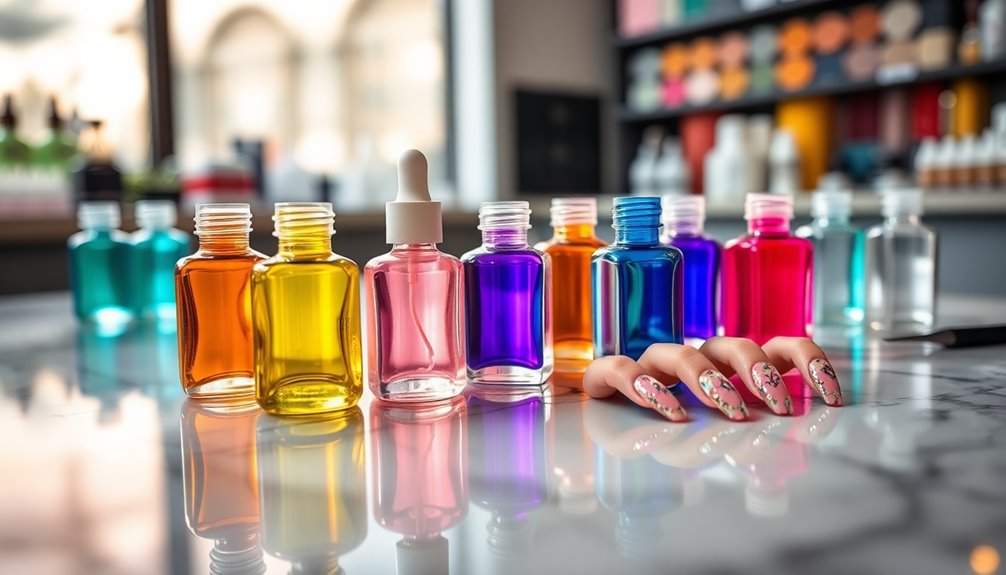
Understanding the various types of monomers is vital for attaining the best results in your acrylic nail applications.
There are different types of monomers that nail technicians use, each designed for specific needs. Normal monomers, often based on ethyl methacrylate (EMA), typically harden within two to three minutes, perfect for standard nail enhancement.
If you need more time for adjustments, slow-setting monomers take over three minutes to set. For speed, competition monomers harden in less than a minute, ideal for professional settings.
Odorless monomers are great for well-ventilated areas, minimizing strong fumes during the hardening process.
It's important to use each monomer with its corresponding polymer to guarantee compatibility and achieve the best results. Additionally, understanding the essential oils for dental health can complement your nail care routine by providing relaxation and pain relief during the application process.
Ingredients of Monomer Liquid for Nails
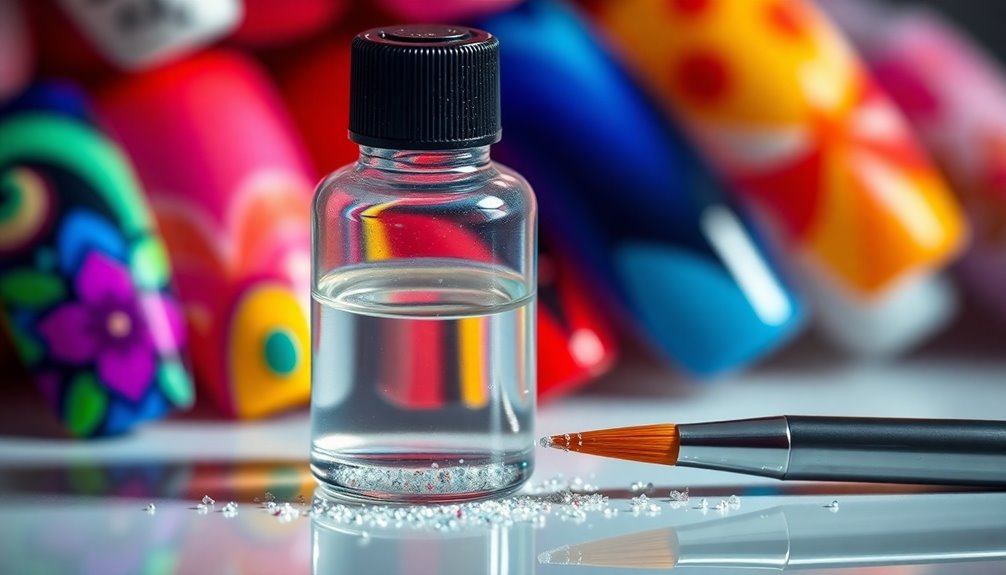
The effectiveness of acrylic nails largely hinges on the ingredients in the monomer liquid. Ethyl methacrylate (EMA) is the primary component, essential for the polymerization process that guarantees strong adhesion to natural nails.
To enhance performance, stabilizers are included to prevent premature polymerization and minimize yellowing over time. The combination of EMA, UV inhibitors, and stabilizers creates a consistent application experience for acrylic products.
Additionally, some monomer liquids contain additives that improve flow and reduce unpleasant odors during use. It's important to use monomers and polymers from the same manufacturer to avoid negative results in your acrylic nails application. Proper retirement planning can help ensure you have the funds necessary for ongoing nail care and beauty treatments in your later years.
Understanding Polymer Powder

Polymer powder plays an essential role in creating acrylic nail enhancements, as it consists of finely milled polymethyl methacrylate (PMMA).
When combined with nail monomer, this acrylic polymer undergoes a chemical reaction, forming a sculptable substance that allows you to shape your nails with ease.
It's vital to use polymer and monomer from the same brand to avoid compatibility issues and guarantee ideal results.
The variety of available colors, including natural, pink, and white, provides endless options for customization, whether you're aiming for a chic natural-looking French or a bold design. Additionally, knowing how to properly store butter can help maintain its freshness and quality, ensuring it remains a delicious addition to your cooking.
Important Precautions and Issues

When working with acrylic nails, it's important to be aware of the precautions and issues associated with using monomers.
Avoid monomers containing methyl methacrylate (MMA) due to significant health risks; instead, opt for ethyl methacrylate (EMA) for safety.
Be mindful of possible allergic reactions to acrylic products, which can result in skin irritation.
Nail techs should always work in a well-ventilated area to minimize harmful fume inhalation from these chemicals.
Proper handling is essential; avoid skin contact with monomers and remove them immediately if an allergic reaction occurs.
Finally, verify you're using monomers and polymers from the same manufacturer to maintain compatibility and reduce the risk of negative results on your natural nails. Additionally, using products like pimple patches can provide targeted treatment for skin irritations that may arise from allergic reactions.
Frequently Asked Questions
What Can I Use Instead of Monomer for Nails?
If you're looking for alternatives to monomer for nails, consider using odorless monomers, which are safer and less pungent.
You can also try HEMA-free acrylic systems if you have sensitivities.
Gel systems offer another option, as they cure with light and don't require traditional monomer.
Acrylic dip systems use a bonding solution instead of liquid monomer, while nail wraps or press-on nails provide a chemical-free enhancement option.
Explore these choices to find what suits you best!
Are Acetone and Monomer the Same Thing?
Did you know that over 90% of nail technicians use acetone for polish removal?
However, acetone and monomer aren't the same. Acetone is a solvent primarily used to dissolve and remove substances, while monomer is a chemical compound vital for creating acrylic nails.
Monomer combines with polymer powder to form a sculptable paste, essential for nail enhancements.
Using acetone on acrylic nails can damage them, so understanding their differences is key.
How to Use Monomer for Nails for Beginners?
To use monomer for nails as a beginner, start by preparing your nail surface—clean and push back cuticles.
Dip your Kolinsky brush in the liquid monomer and pick up a bead of polymer powder.
Place this bead near the cuticle and gently press it down, blending it into the nail bed.
Shape the acrylic, working quickly, and let it cure for 10-15 minutes before filing and applying polish for a polished finish.
Do You Need Monomer for Gel Nails?
Imagine you're painting a canvas, but instead of mixing colors, you simply layer them on and let the light reveal your masterpiece.
That's how gel nails work! You don't need monomer for gel nails; they thrive on a different magic.
Instead of the liquid and powder dance of acrylics, gel nails cure under UV or LED light, giving you a flexible, smooth finish without the fuss of mixing anything.
Enjoy the simplicity!
Conclusion
In the world of nail enhancements, liquid monomers are your trusty sidekick, transforming simple powders into beautiful, durable designs. Just like a wizard casting a spell, these monomers create a bond that lasts, but you've gotta use them wisely. Remember to prioritize safety and follow best practices, or you might find yourself in a nail disaster reminiscent of a fairytale gone wrong. Embrace the magic, and let your creativity shine while keeping those precautions in mind!


